Unsheltered, Part 4: What is a city’s ‘fair share’ in solving homelessness, and who should decide?
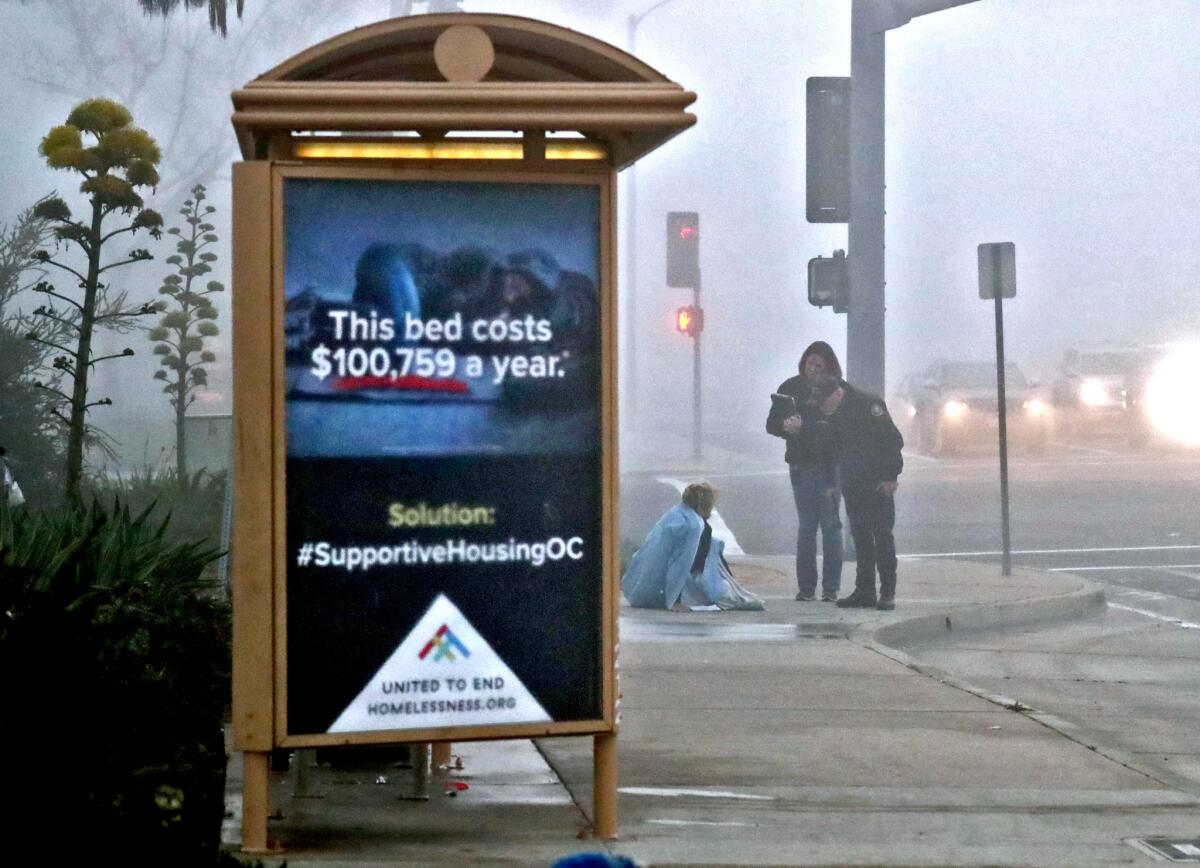
- Share via
Editor’s note: This is the fourth article of Unsheltered, a five-part series examining homelessness in the cities of Costa Mesa, Fountain Valley, Huntington Beach, Laguna Beach and Newport Beach. Though many private organizations and various levels of government are involved in the search for solutions, the series looks specifically at the problem in local cities, what they are doing about it and what more might be done. This part explores the concept of a city’s “fair share” in contributing to solutions and what that might involve.
Spend enough time in a civic setting and you’re bound to hear the words “fair share” when homelessness comes up.
Municipal staff members may say their cities are more than willing to do their fair share to address homelessness. Local leaders may tout the efforts they believe prove they’re already fulfilling their end of the bargain. Residents of one city might express concern that others aren’t doing enough and are saddling them with a disproportionate burden.
“Fair share” is a buzzworthy phrase that represents a significant hurdle that experts and advocates have identified in addressing homelessness — cities pursuing separate strategies rather than joining forces.
The potential benefits of a unified response are clear, according to Costa Mesa Mayor Pro Tem John Stephens. “If everybody did their fair share, then you wouldn’t have to worry about that issue of … one city’s homeless folks being attracted to another city,” he said.
However, cities haven’t always been in step with one another in deciding how to respond to their homeless populations. For instance, Laguna Beach for years filled a unique niche as a coastal Orange County city with a homeless shelter.
“As a community, we are doing more than our fair share,” said Laguna City Councilman Peter Blake. “I do wish our surrounding communities would do more.”
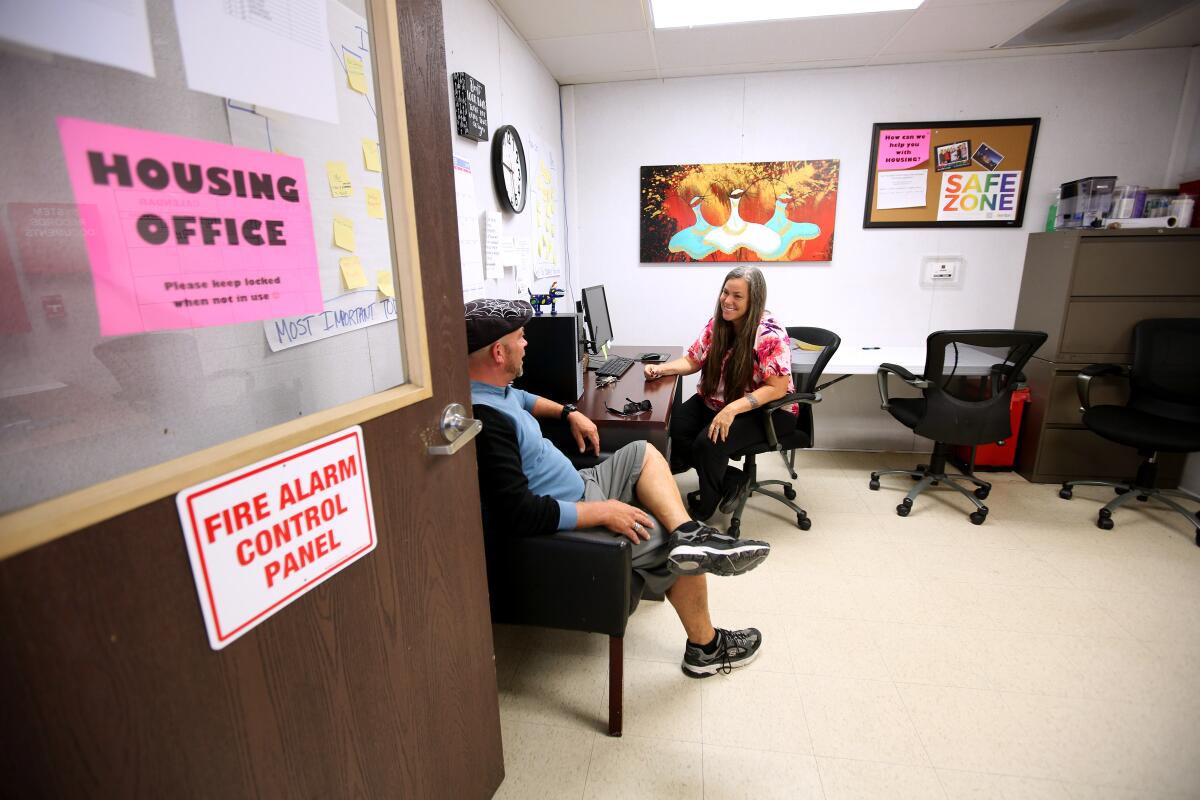
But what a city’s fair share should look like depends on whom you ask.
While local leaders, service providers, experts and advocates seem increasingly in agreement about the need for cooperative regional efforts to combat the county’s burgeoning homelessness problem, there’s no shortage of opinions on precisely what those efforts should be.
For some, fair share could mean cities developing separate shelters to serve their own homeless populations. Others might contend it makes more sense to develop larger-scale facilities serving and supported by multiple cities.
Shelters, though the priority of the moment for many in Orange County, may be only part of the equation. Is it necessary for cities to also accommodate supportive housing units, which come bundled with services aimed at keeping people housed and connecting them with needed resources?
And what of the issue often cited as one of the county’s main accelerants of homelessness — a lack of affordable housing? Do cities have a responsibility to put their thumbs on the scale in some way, even as home and other property values reach new heights?
Hanging over all this are perhaps the trickiest questions: Who should determine the fair share, and how?
The Daily Pilot recently posed those and other related questions to every city council member in Costa Mesa, Fountain Valley, Huntington Beach, Laguna Beach and Newport Beach. The intent was to get an idea of how policymakers view their roles, and those of others, in addressing homelessness and what speed bumps may lie ahead.
In some cases, officials issued joint responses. Some declined to answer some or all of the Pilot’s questions. Others did not respond.
What is the ‘fair share’?
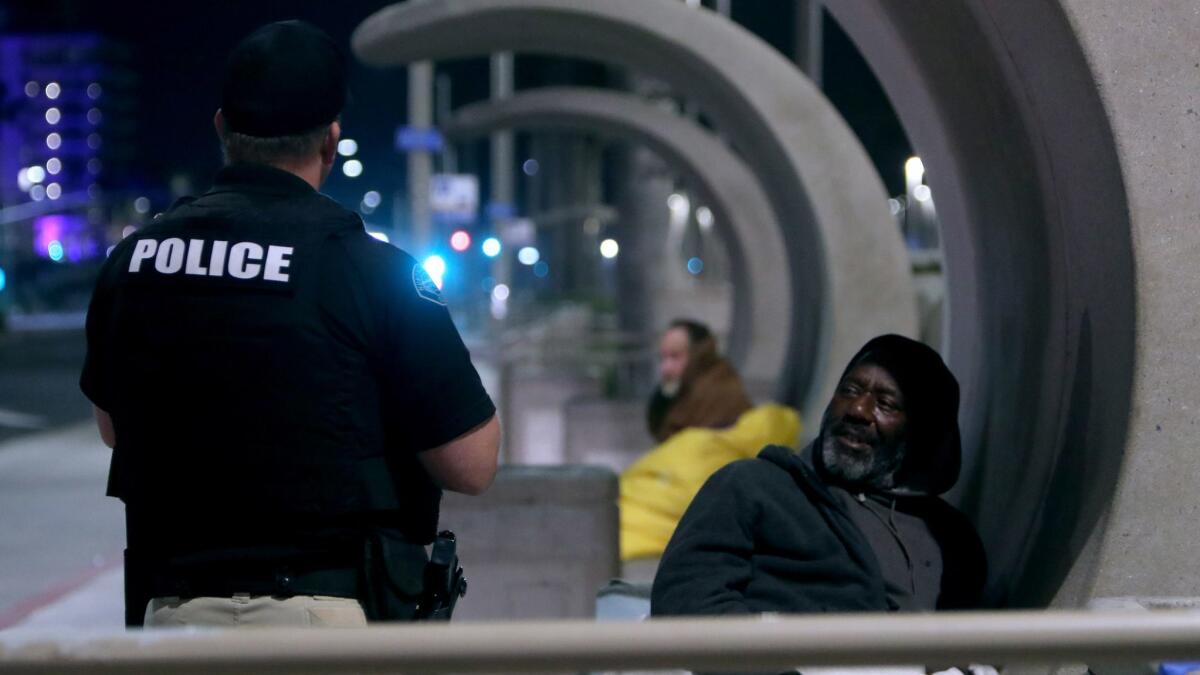
“Each city absolutely must do its fair share to address homelessness — otherwise, only a few cities bear the financial and neighborhood impacts,” according to a statement from the Costa Mesa city manager’s office.
A trio of Newport Beach council members — Will O’Neill, Brad Avery and Joy Brenner — offered similar sentiments in a joint response.
“Homelessness is not an issue that stops at any municipal boundary, so responsibility exists at both local and regional levels,” they wrote. “The three Service Planning Areas [that subdivide Orange County into three regions: north, central and south] are coordinating and need to continue to develop housing policies that complement one another and address the specific needs within their [cities].”
Some of their counterparts in Laguna Beach, Huntington Beach and Fountain Valley echoed the notion.
“I don’t think any one place has the answer, and I think it takes a team working together to solve,” said Laguna Beach Mayor Pro Tem Steve Dicterow.
Despite the shared opinion that fighting homelessness needs to be a group effort, the devil is in the details.
When city leaders were asked what their fair share should look like, the responses in many cases were general, expressing a need for regional cooperation while emphasizing that cities must have latitude to tailor their efforts to their specific needs.
“A city’s ‘fair share’ should reflect Point in Time counts, total population and fiscal capacity of each city,” said Huntington Beach Councilman Patrick Brenden. “But individual cities should determine their ‘fair share,’ not the courts or the state or even the county.”
The Point in Time count is a federally required biennial census of the homeless.
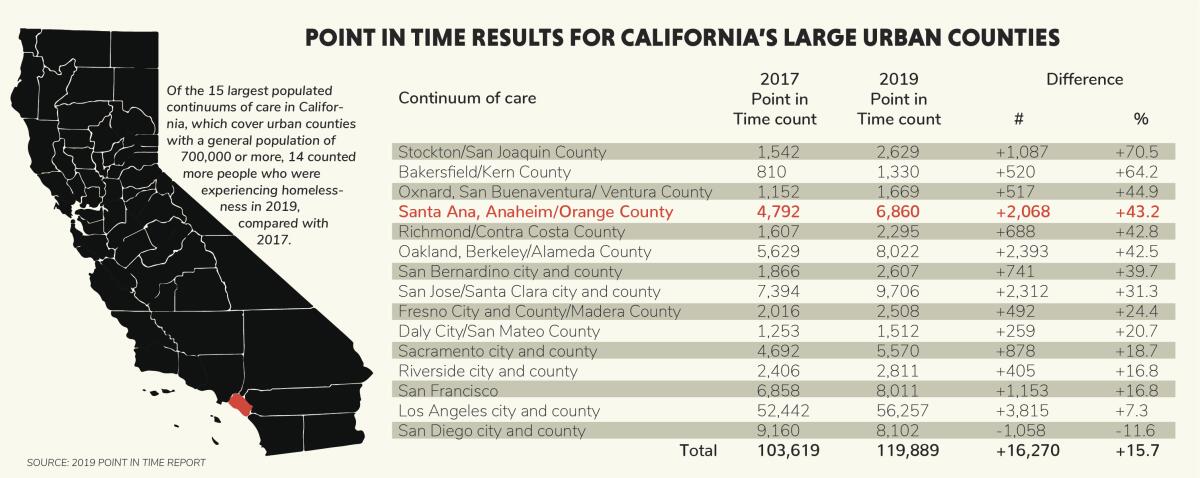
Fountain Valley Councilwoman Kim Constantine said “the county should work with cities, as it’s not a one-size-fits-all solution.”
Huntington Beach Councilwoman Barbara Delgleize said she doesn’t like the concept of a defined fair share.
“Each city should be encouraged to address its residents’ — housed as well as homeless — needs as it sees fit, without threat,” she said.
“Every city should participate in solutions,” she added, “but the solutions may be regional.”
Potential structure
Costa Mesa’s situation sheds some light on what fair share could look like.
In response to direction from the federal judge overseeing a lawsuit filed on behalf of homeless people cleared from a former encampment along the Santa Ana River — a case Costa Mesa agreed to settle in March — the city committed to providing enough beds to serve 60% of its unsheltered homeless population, as established in the 2017 Point in Time count.
Using that metric, Costa Mesa was responsible for 62 beds, 50 of which are now provided in a shelter at Lighthouse Church of the Nazarene. The remaining 12 were secured through a partnership with College Hospital, a local acute-care facility, and are available to people suffering a mental health crisis.
“The 60% of Point in Time count standard is fair, but other options include proportional responsibility and funding relative to each city’s share of the county population,” Costa Mesa officials wrote in their statement to the Pilot.
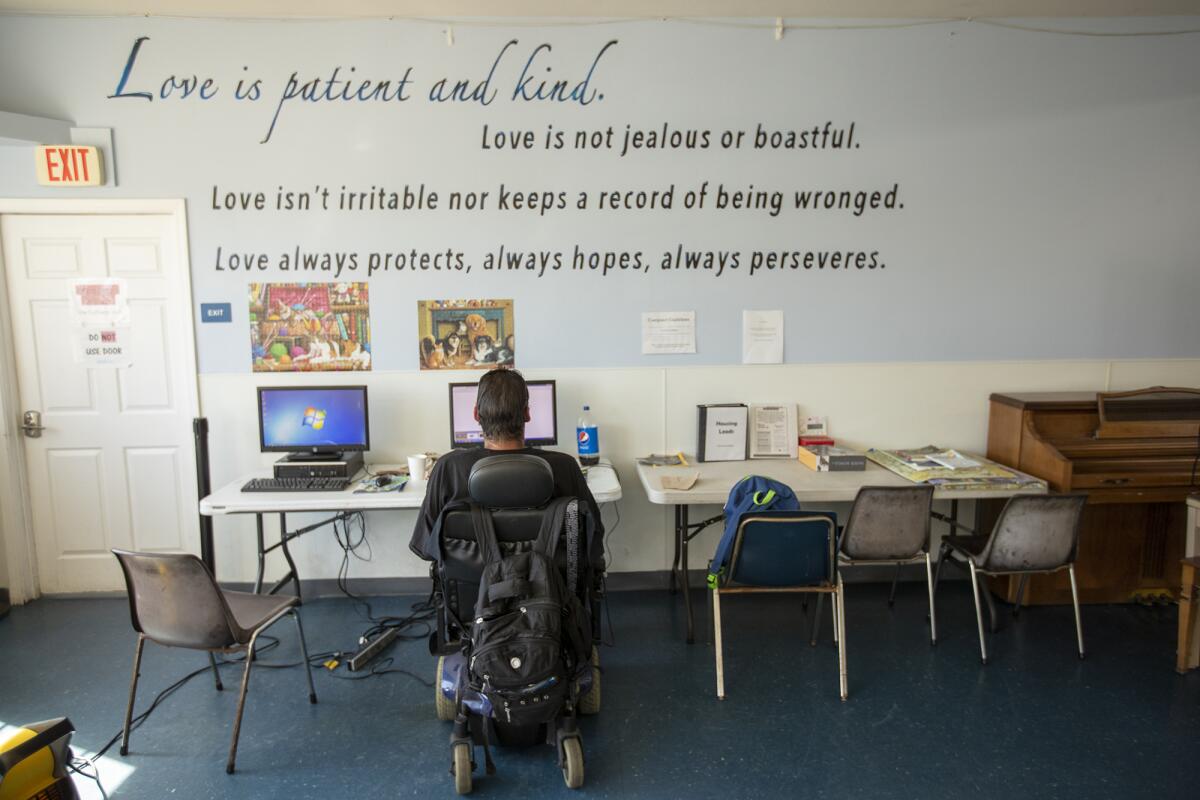
Using the 60% standard, the approximate number of beds required for local cities, based on how many unsheltered homeless people were found during the 2017 count, would be:
- Fountain Valley: 17
- Huntington Beach: 71
- Laguna Beach: six
- Newport Beach: 23
The method would require virtually every city in Orange County to provide at least some transitional or emergency beds.
All local cities except Fountain Valley saw their unsheltered homeless populations rise from the 2017 count to the most recent one in January 2019, so the requirement for each would be higher using the latest available numbers — in some cases, markedly so.
“Individual cities should determine their ‘fair share,’ not the courts or the state or even the county.”
— Patrick Brenden, Huntington Beach councilman
Though some homeless advocates have stopped short of calling for shelters in each Orange County city, many have emphasized the need for every city to have skin in the game.
“I’m a firm believer in every city doing its what they call fair share,” said Bill Nelson, executive director of Fresh Beginnings Ministries, a Costa Mesa-based nonprofit. “The reason is because more people will get reached. ... Costa Mesa has its own culture and the city government of Costa Mesa knows that, right? Then they start to deal with their own people.
“Santa Ana, Fountain Valley, Huntington Beach, Newport, whatever city you want to talk about, Laguna, everybody’s different in their own cities.”
Some also feel it’s more practical for larger cities to have multiple shelters rather than for each of the county’s 34 cities to have their own.
A more regional view
Another concept floated over the years is developing a larger, more centralized source of shelter or supportive housing.
One site periodically proposed is the Fairview Developmental Center on 114 state-owned acres at 2501 Harbor Blvd. in Costa Mesa.
The center, which provides services for people with intellectual and developmental disabilities, is winding down operations and is slated to close soon.
At the end of November, 14 people were living at Fairview — down from a high of 2,700 in 1967 — but the infrastructure necessary to support a larger population remains.
In March 2018, then-Orange County Supervisor Shawn Nelson said he and state Sen. John Moorlach (R-Costa Mesa) were looking into the site as an emergency homeless shelter.
However, the idea was quickly abandoned following outcry from the community and disapproval from the Costa Mesa City Council.
Nevertheless, the thought of using the property to provide homeless resources hasn’t gone away. California’s latest budget includes $2.2 million to evaluate the site’s future.
That process would entail “working with the city of Costa Mesa and Orange County to identify local stakeholder interest in the reuse of the property, particularly related to meeting housing and homelessness needs,” according to the budget, as well as exploring “options to immediately enter into a lease with a local jurisdiction to provide housing and supportive services for up to 200 individuals with cognitive disabilities who are currently homeless.”
Costa Mesa council members later created an ad hoc committee to communicate with state and county officials and advise the council about Fairview’s future.
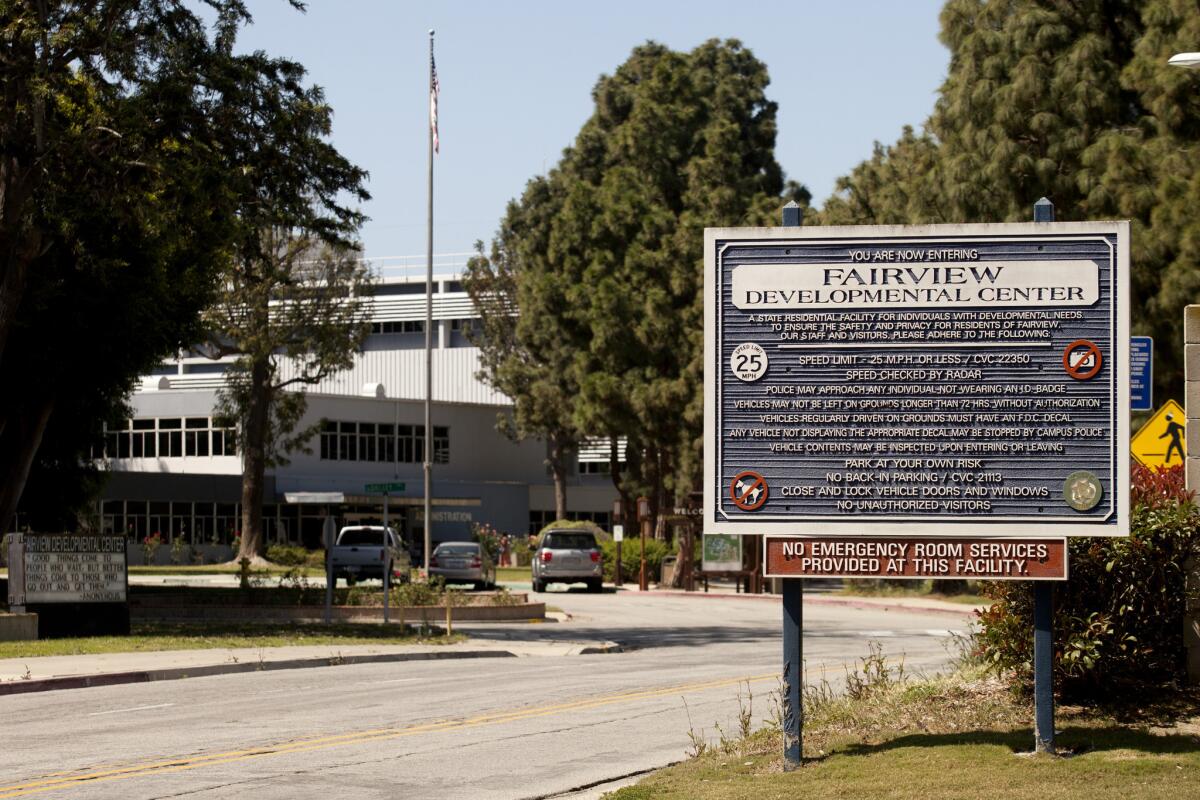
In May, when the Fairview-related budget item was announced, state Assemblywoman Cottie Petrie-Norris (D-Laguna Beach) said the state should devote resources to support more-immediate, locally based solutions.
“As state leaders, I think the most powerful role that we can play is to use our capacity to amplify the work of the groups that are already getting results on the ground,” she said.
One advantage of a regional shelter or service center is that it could spread the cost to multiple municipalities. Those who might be reluctant to cut a ribbon on a new facility within their borders could instead cut a check.
A coalition of north Orange County cities, for instance, has come together to develop regional homeless shelters/service centers in Buena Park and Placentia.
Fountain Valley Councilman Steve Nagel said “it could be that the best homeless solution model has more services in some cities and less in others in order to most effectively solve the issues.”
His city, he said, “does not have the funding sources or staffing to provide specific shelter or support services, but we are working to provide opportunities and incentives to encourage supportive housing units in future development” — including a planned affordable-housing complex that will set aside eight of its 50 units for formerly homeless veterans.
“I think the county can work out a plan to determine where they should best locate resources to create an effective and efficient regional network to best serve the homeless population,” Nagel said. “Many factors such as site cost, site availability [and] close access to supportive services should all be assessed before determining where to site any new services.”
Brenden agreed that “cities certainly need to be a partner in the collaborative efforts led by the county.”
“The concept of ‘fair share,’ however, is convoluted because the homeless population knows no borders,” Brenden said. “The actions of one city can impact the homeless population of neighboring and nearby cities. Cities should be allowed to contribute their ‘fair share’ by pooling resources with the county or other cities.”
Orange County spokeswoman Molly Nichelson said the county is “committed to working with cities to strengthen regional collaboration and service coordination to address homelessness.”
Board of Supervisors Chairwoman Lisa Bartlett said in July that “the county will continue its efforts with cities and other stakeholders to implement solutions with the ultimate goal of building out our comprehensive system of care and achieving an end to homelessness in Orange County.”
Susan Price, the county’s director of care coordination, said early last year that she believed the issue was “really turning a corner in this county ... everyone is participating in and investing in solutions.”
“It’s a safe bet to get on board with solutions, because there’s so much of that happening right now,” said Price, who has been hired as Costa Mesa’s assistant city manager. “It’s not OK to leave this situation to solve itself, because it won’t.”
“The county will continue its efforts with cities and other stakeholders to implement solutions with the ultimate goal of building out our comprehensive system of care and achieving an end to homelessness in Orange County.”
— Lisa Bartlett, chairwoman of Orange County Board of Supervisors
Becks Heyhoe, director of United to End Homelessness for Orange County United Way, said she’s “very aware of the fair share argument” and thinks “to a certain extent it’s a valid argument, but I also think that we do need to remember that we need to address homelessness regionally as well.”
“They’ll probably be able to get a better return on their investments if they’re working across city lines and working in collaboration and partnership together,” she said.
A key to that, advocates say, is educating city leaders and residents about shelters and supportive housing. That’s especially important, they say, in cities that have been on the fence, if not outright resistant, when it comes to providing homeless resources.
“No one city wants 15 acres turned into thousands upon thousands of units of permanent supportive housing, and I think that’s fair and valid,” Heyhoe said. “I do think this needs to be a regional approach … where people’s homelessness can end across the entire county.”
Others’ fair share
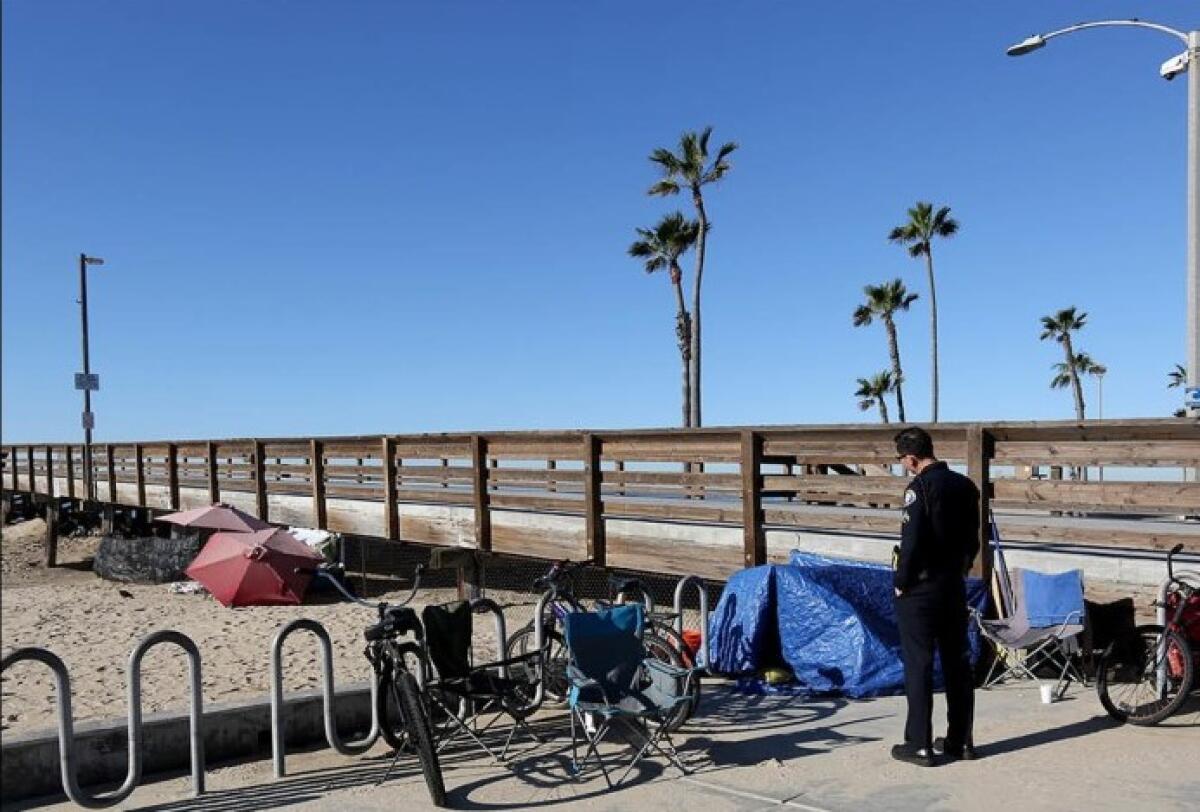
Local leaders in every city the Daily Pilot surveyed said they believe their cities are doing their fair share.
Costa Mesa officials cited the city’s recently opened homeless shelter, its commitment to opening a more permanent facility near John Wayne Airport and the efforts of its Network for Homeless Solutions — a collaboration of city staff, local churches, nonprofits, private organizations and volunteers formed to address local homelessness.
“I am proud of the leadership that Costa Mesa has shown in doing our fair share to address the homelessness crisis in our city,” Mayor Katrina Foley said. “This regional, statewide and national issue will require all jurisdictions to come together and fund innovative programs and interventions locally.”
Officials in Laguna Beach pointed to their own homeless shelter, which predates those that have opened recently or are being considered in neighboring cities. Laguna’s facility, called the Alternative Sleeping Location, has been open for more than a decade.
“Our overall view is Laguna Beach continues to be a leader in terms of services for the homeless, and we really need other cities in South County to step up and shoulder their share of the solution,” Mayor Bob Whalen said in April.
Officials in other cities pointed to their staffing — which in many cases includes resource officers or other personnel geared toward helping the homeless — or their collaborative efforts with nonprofits or faith-based service providers.
“Huntington Beach has been actively addressing the homeless situation in our community for years,” Councilwoman Kim Carr said. “In 2015, the city established a Homeless Task Force comprised of two full-time police officers, one program coordinator and four case managers. The H.B. Homeless Task Force has successfully helped over 262 individuals get off the streets and reunited over 70 individuals with their families.”
While touting their own efforts and accomplishments, some leaders said they couldn’t say whether other cities are doing their share.
“My focus is on my city and I don’t know specifics about what other cities are doing,” said Fountain Valley’s Constantine.
“Responding to this question would require knowing the individuals in their cities and what is best for those people,” Newport Beach’s Avery, Brenner and O’Neill said in their statement.
Still, they added, “we see the great efforts ongoing in our neighboring cities and appreciate those efforts.”
Costa Mesa officials, however, wrote that “some other Orange County cities are doing their fair share, but many others resist the establishment of shelters within their jurisdictions. Providing shelter and housing is more cost-effective than providing services to the unsheltered.”
Whatever cities have or haven’t done in the past, the focus is turning to the road ahead and the biggest question of all: Given its enormity and complexity, can homelessness ever truly be solved in Orange County?
Coming in Part 5: What does the future hold?
Daily Pilot staff writers Lilly Nguyen and Julia Sclafani contributed to this report. Priscella Vega writes for the Los Angeles Times.
All the latest on Orange County from Orange County.
Get our free TimesOC newsletter.
You may occasionally receive promotional content from the Daily Pilot.






